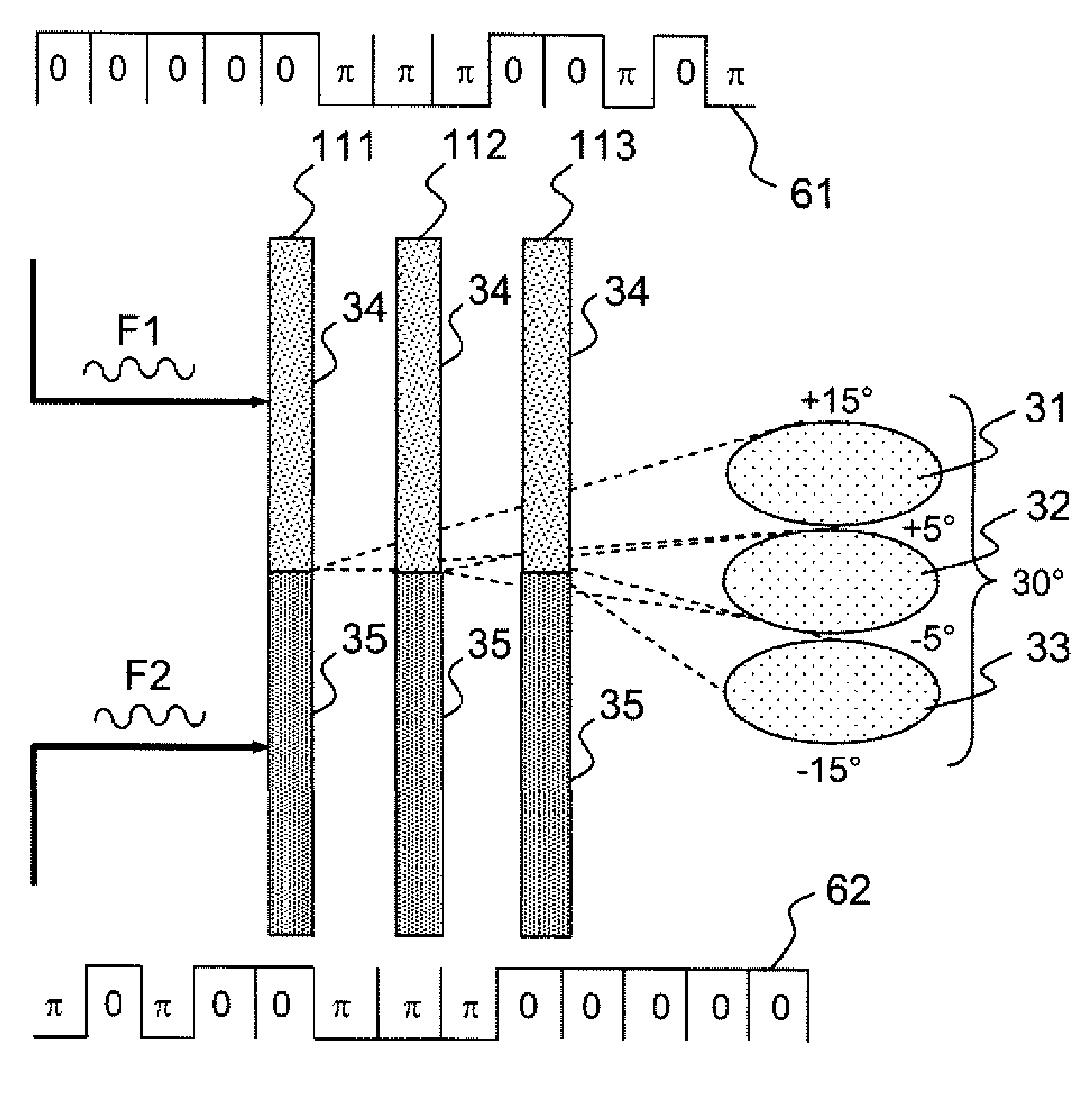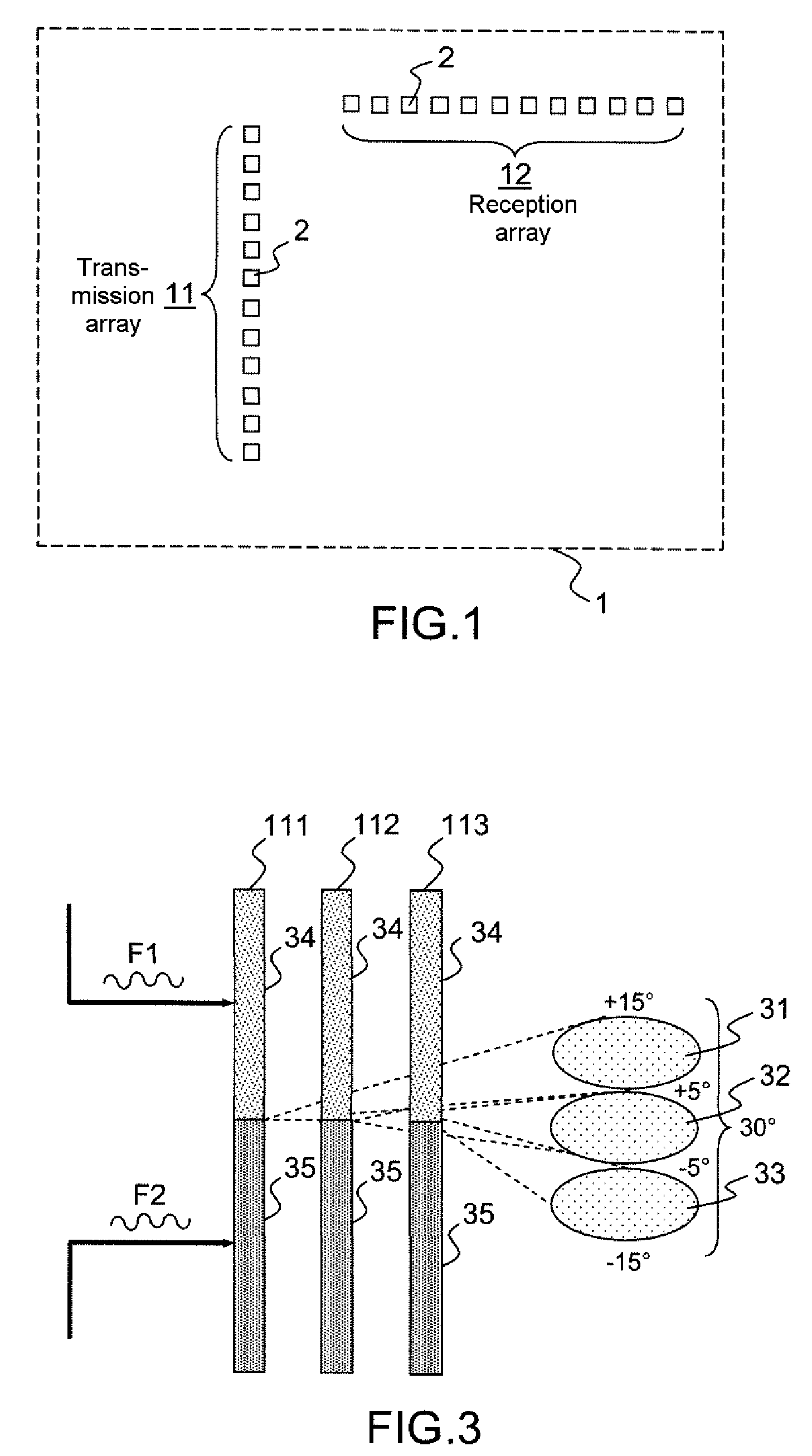Agile-beam radar notably for the obstacle 'sense and avoid' function
a radar and antenna technology, applied in the field of antenna antenna detection and avoidance function, can solve the problems of difficult integration of electronics and antennas, tight electronics volume, and inability to achieve easy integration onto the carrier,
- Summary
- Abstract
- Description
- Claims
- Application Information
AI Technical Summary
Benefits of technology
Problems solved by technology
Method used
Image
Examples
Embodiment Construction
[0038]FIG. 1 shows the principle of construction of an antenna 1 used in a radar system according to the invention. This antenna comprises two arrays 11, 12 of radiating elements 2, each forming an elementary transmission source and an elementary reception receiver. They are fabricated using the same technology and are, for example, metal “patches”.
[0039]These two arrays 11, 12 are linear and orthogonal to one another. One array 11 is used for the transmission and the other array 12 is used for the reception. More particularly, the first array 11 is used to focus the antenna beam in one plane on transmission, using beam formation by computation. The second array 12 is used to focus the reception antenna beam in the plane orthogonal to the preceding plane, using beam formation by computation.
[0040]In view of the required respective angular ranges of coverage, + / −110° in azimuth and + / −15° in elevation, at least one vertical array is used for transmission and at least one horizontal a...
PUM
 Login to View More
Login to View More Abstract
Description
Claims
Application Information
 Login to View More
Login to View More - R&D
- Intellectual Property
- Life Sciences
- Materials
- Tech Scout
- Unparalleled Data Quality
- Higher Quality Content
- 60% Fewer Hallucinations
Browse by: Latest US Patents, China's latest patents, Technical Efficacy Thesaurus, Application Domain, Technology Topic, Popular Technical Reports.
© 2025 PatSnap. All rights reserved.Legal|Privacy policy|Modern Slavery Act Transparency Statement|Sitemap|About US| Contact US: help@patsnap.com



